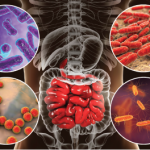NEW YORK (Reuters Health)—A large population-based study from the U.K. provides more evidence that some autoimmune liver diseases may be triggered by exposure to something in the environment.
The study found a significant clustering of cases of primary biliary cholangitis (PBC), autoimmune hepatitis (AIH) and primary sclerosing cholangitis (PSC) in well-defined regions of north-east England and North Cumbria, suggesting an environmental agent(s) may have been involved, the researchers say.
Dr. Jessica Dyson and colleagues from Newcastle University and Newcastle upon Tyne Hospitals NHS Foundation Trust and colleagues reported their findings April 10 at The International Liver Congress in Vienna, Austria.
PBC, AIH and PSC are relatively rare and the underlying cause of these autoimmune liver diseases is not completely understood, although an interplay between genetic and environmental factors has been proposed.
Clusters of PBC have been previously reported near toxic waste sites near New York City, as well as in Northern England, but less is known about disease clusters for AIH and PSC.1
To investigate, Dr. Dyson and colleagues identified a large group of people from north-east England and North Cumbria who had PBC (n=2,150), AIH (n=963) or PSC (n=472). They used spatial point analyses to gauge disease clustering using postal addresses, and spatio-temporal analyses for those with a known year of diagnosis.
“Significant spatial clustering” was observed for all three diseases at roughly 1 to 2 km, they report in their meeting abstract. Further clustering was observed for AIH and PSC with a peak distance of roughly 10 km. Clustering was also evident at 7.5 km for PBC and was sustained to the limits of the spatial range (20 km).
No significant temporal clustering was found in any of the diseases, which discounts the theory of more transient environmental components such as infection may be associated with development of these diseases, the researchers note.
“This study suggests that exposure to a persistent, low-level environmental agent may have played a role in the pathogenesis of all three autoimmune liver diseases studied, not just PBC,” Dr. Dyson says in a statement from the conference.
“The varying distances of peak clustering,” she adds, “raises the possibility that different environmental factors contribute to PBC, AIH, and PSC. In previous PBC clustering studies, water reservoirs, industrial or coal mining factors, or waste disposal site toxins have been implicated. Further work is ongoing to try to identify factors that may potentially be associated with the clustering observed in our study.”


